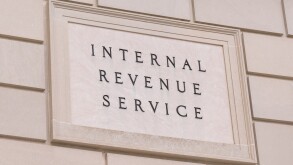
|

|
|
Vladimir Kotenko |
Iryna Kalyta |
New Ukraine-Cyprus Double Tax Treaty starts applying
On January 1 2014, the Ukraine-Cyprus double tax treaty started to apply. The new treaty supersedes the exceptionally beneficial USSR-Cyprus treaty and provides for 5%/15% on dividends, 2% on interest and 5%/10% on royalties. Ukraine and Cyprus also managed to resolve the discrepancy between the Greek and the Ukrainian texts of the Ukraine-Cyprus treaty and ensured that the USSR-Cyprus treaty ceased to apply when the new treaty started applying, and not earlier.
Decrease of corporate profit tax and VAT rate is postponed
Ukraine postponed the declared decrease of corporate profit tax and VAT rates. In 2014, the VAT rate will remain the same as in 2013 (20%), whereas corporate profit tax rate will go down by one percentage point and be 18% (as opposed to the initially declared 16%).
Transfer of shares exempt from transfer tax
Starting in 2014, the transfer of shares in joint stock companies is no longer subject to the special purpose excise tax (which could reach up to 1.5% of the contract value). This legislative development significantly narrows the list of transactions covered by the tax. The exemption was introduced as part of a package of technical changes to the Tax Code of Ukraine, so it is not clear whether it truly was intended by the law maker.
Developments in new Ukrainian transfer pricing rules
The Ukrainian government adopted a list of low-tax jurisdictions that will apply for transfer pricing purposes. Transactions between Ukrainian companies and non-Ukrainian companies resident in low tax jurisdictions will be subject to Ukrainian transfer pricing rules even if these companies are unrelated. The list comprises of 74 states where the corporate profit tax rate is lower than that of Ukraine by 5%, and includes Cyprus, Ireland and Switzerland.
The Ukrainian government has also published a draft transfer pricing reporting template. The template is similar to that used in Russia, and implies disclosure of detailed information on controlled operations.
Vladimir Kotenko (vladimir.kotenko@ua.ey.com) and Iryna Kalyta (iryna.kalyta@ua.ey.com)
EY
Tel: +380 44 490 3000
Fax: +380 44 490 3030
Website: www.ey.com/ua









